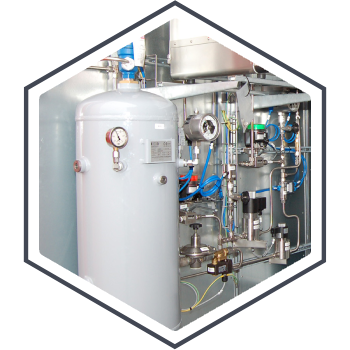CO2-free energy generation

Natural gas and methane are two of the main energy sources in Germany. Burning methane produces large amounts of greenhouse gases that are harmful to the climate. To achieve climate targets, CO2 emissions must not only be reduced, but energy must be generated completely free of CO2.
The Methane-Plasmalyzer split natural gas or biogas (CH4) into hydrogen and solid carbon using 10kWh/kgH2 – without releasing any CO2. This results in 1 kg of hydrogen and 3 kg of solid carbon from 4 kg of methane.
The hydrogen is used in a hydrogen CHP unit or SOFC fuel cell to generate CO2-free heat and electricity. Industrial companies, hotels and shopping centers can thus achieve their CO2 reduction targets, meet the requirements of their stakeholders and reduce costs.
Solid carbon is a valuable auxiliary material for industry and is used for asphalt, concrete, cement or for soil improvement, for example. This enables long-term removal of CO2 from the cycle, and is therefore exempt from the CO2 tax.
CO2 degradation (process-related CO2 sink)
In Germany, there are over 9,000 biogas plants that generate heat and electricity from methane (biogas) in combined heat and power plants (CHP). Large amounts of CO2 are formed in the process. Methane plasmalysis decarbonizes energy production by not burning the methane but splitting it into hydrogen and carbon beforehand.
If the hydrogen obtained from biogas is used in a hydrogen CHP unit or an SOFC fuel cell to generate heat and electricity, and the carbon is further processed and permanently bound in products, the process is not only emission-free but has a negative CO2 balance.
Graforce thus offers the first genuine alternative to the controversial CCS storage of CO2 (Carbon Capture Storage).


